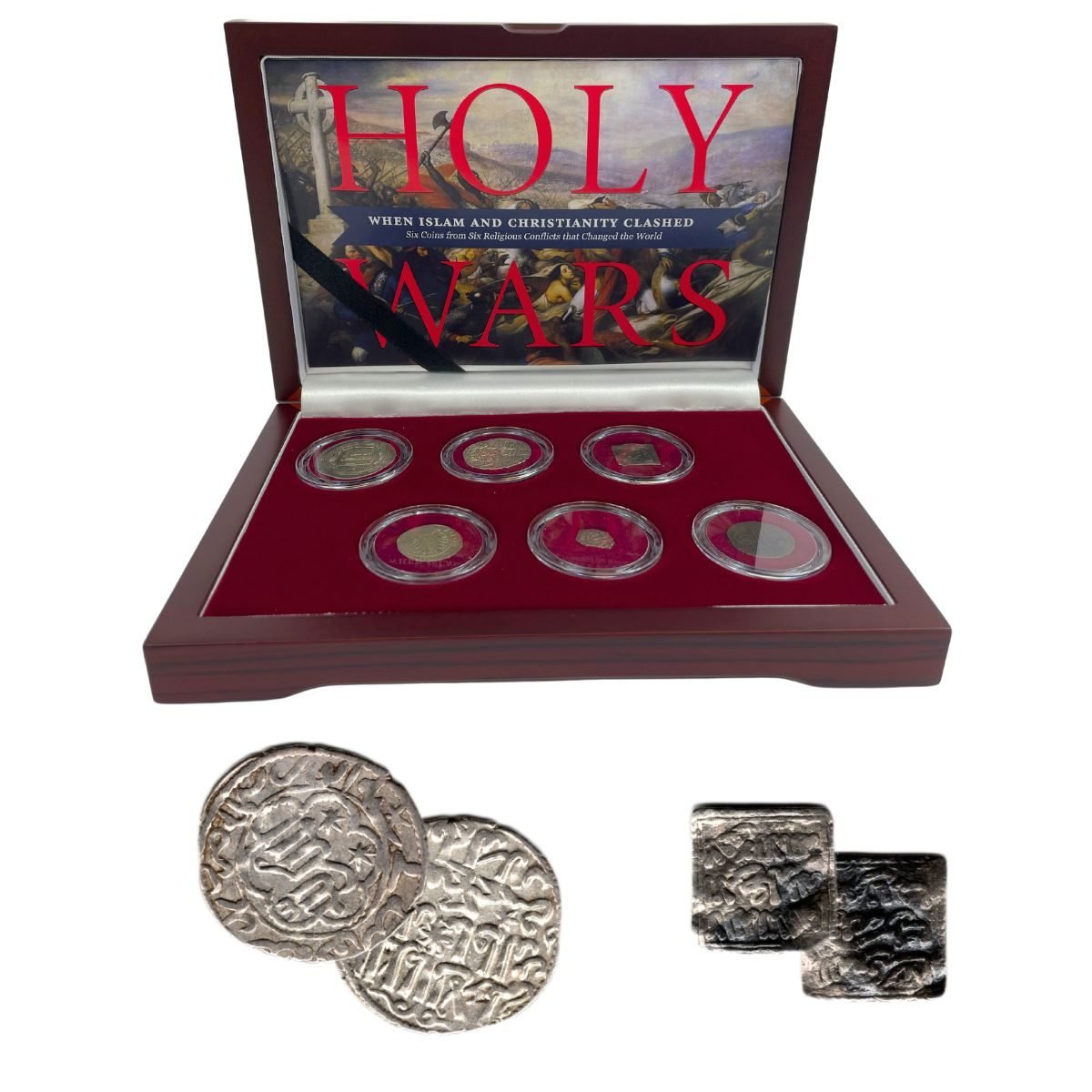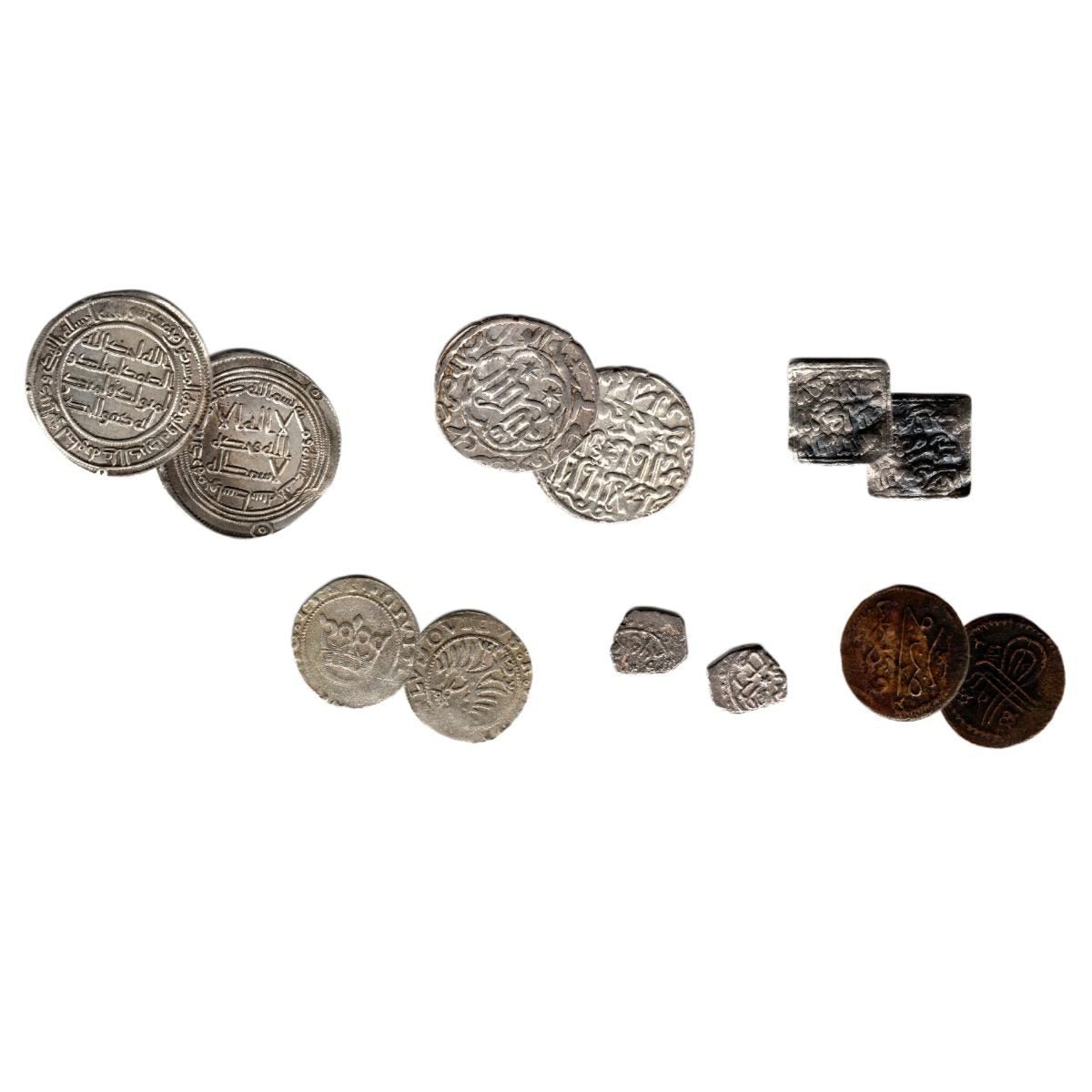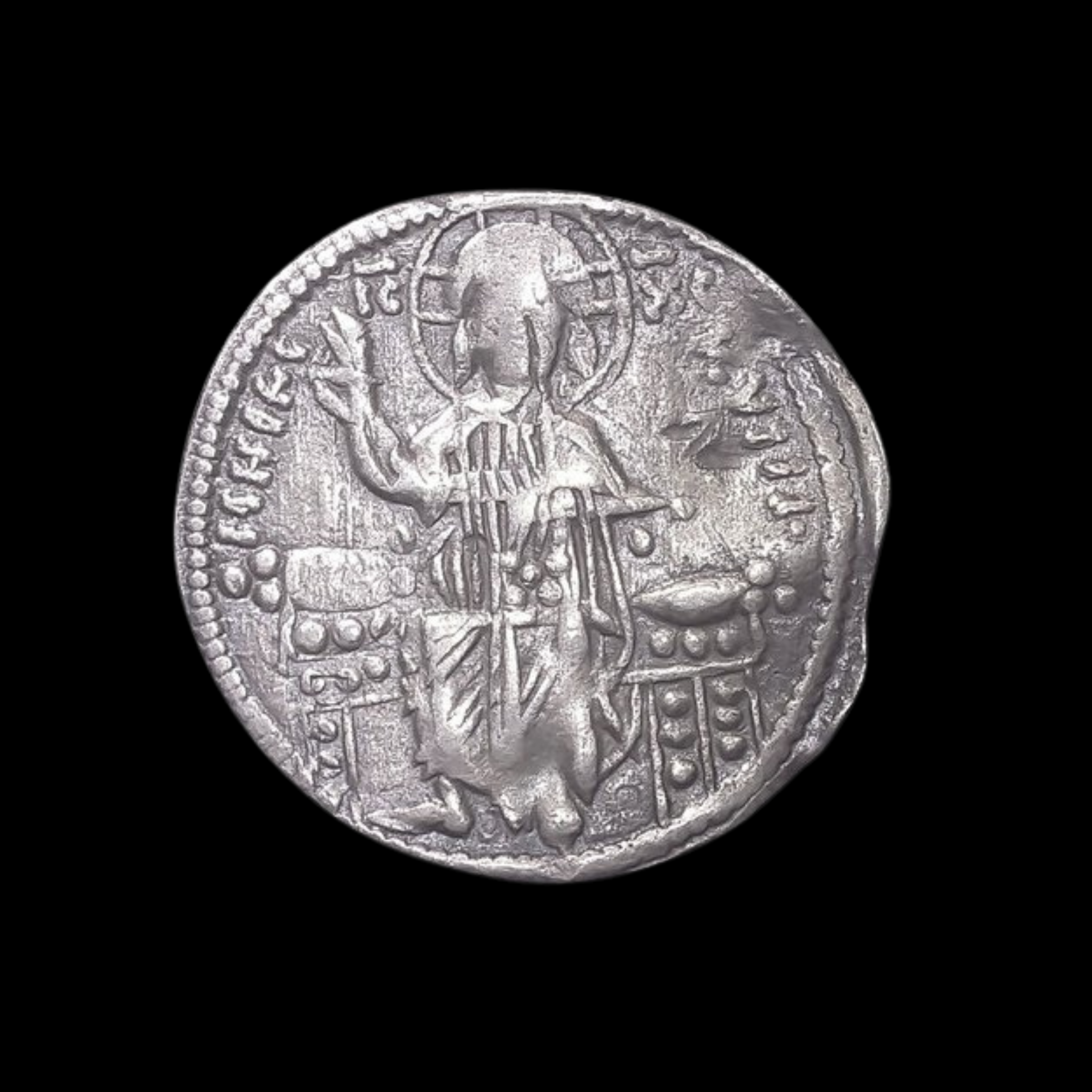Byzantine Silver Miliaresion (Silver Coin) of Emperors Leo V and Constantine (about 1210 years ago)
This silver miliaresion (Byzantine silver coin) was minted between 813-820 AD in Constantinople (modern Istanbul, Turkey) during the joint reign of Emperor Leo V the Armenian and his son Constantine.
Front Side: Likely features a religious inscription or Christian symbolism
Back Side: Probably displays imperial titles and dynastic information
Technical Details:
Size: 22mm diameter
Weight: 2.17 grams
Orientation: 12h (die axis)
Condition: VF (Very Fine)
Mint: Constantinople
Historical Significance: Leo V the Armenian came to power after deposing Michael I Rangabe following a military defeat against the Bulgars. His short reign was marked by military successes against the Bulgars and a revival of Byzantine Iconoclasm (the religious policy forbidding religious images). This coin represents the Byzantine attempt to establish a dynastic succession by featuring both Leo and his young son Constantine. The miliaresion was designed to compete with Islamic silver dirhams in international trade and typically featured crosses and religious inscriptions, which ironically conflicted with Leo's iconoclastic policies that banned religious imagery in churches.
This silver miliaresion (Byzantine silver coin) was minted between 813-820 AD in Constantinople (modern Istanbul, Turkey) during the joint reign of Emperor Leo V the Armenian and his son Constantine.
Front Side: Likely features a religious inscription or Christian symbolism
Back Side: Probably displays imperial titles and dynastic information
Technical Details:
Size: 22mm diameter
Weight: 2.17 grams
Orientation: 12h (die axis)
Condition: VF (Very Fine)
Mint: Constantinople
Historical Significance: Leo V the Armenian came to power after deposing Michael I Rangabe following a military defeat against the Bulgars. His short reign was marked by military successes against the Bulgars and a revival of Byzantine Iconoclasm (the religious policy forbidding religious images). This coin represents the Byzantine attempt to establish a dynastic succession by featuring both Leo and his young son Constantine. The miliaresion was designed to compete with Islamic silver dirhams in international trade and typically featured crosses and religious inscriptions, which ironically conflicted with Leo's iconoclastic policies that banned religious imagery in churches.
This silver miliaresion (Byzantine silver coin) was minted between 813-820 AD in Constantinople (modern Istanbul, Turkey) during the joint reign of Emperor Leo V the Armenian and his son Constantine.
Front Side: Likely features a religious inscription or Christian symbolism
Back Side: Probably displays imperial titles and dynastic information
Technical Details:
Size: 22mm diameter
Weight: 2.17 grams
Orientation: 12h (die axis)
Condition: VF (Very Fine)
Mint: Constantinople
Historical Significance: Leo V the Armenian came to power after deposing Michael I Rangabe following a military defeat against the Bulgars. His short reign was marked by military successes against the Bulgars and a revival of Byzantine Iconoclasm (the religious policy forbidding religious images). This coin represents the Byzantine attempt to establish a dynastic succession by featuring both Leo and his young son Constantine. The miliaresion was designed to compete with Islamic silver dirhams in international trade and typically featured crosses and religious inscriptions, which ironically conflicted with Leo's iconoclastic policies that banned religious imagery in churches.















